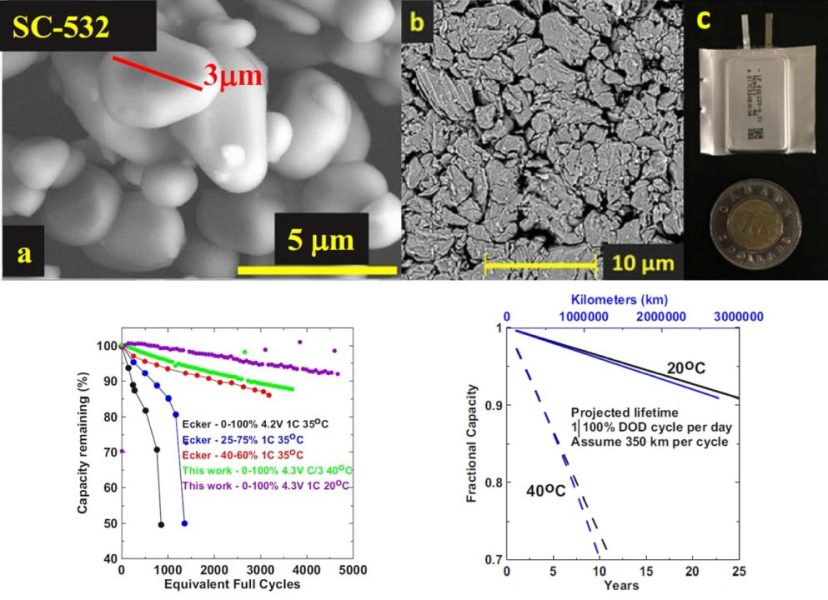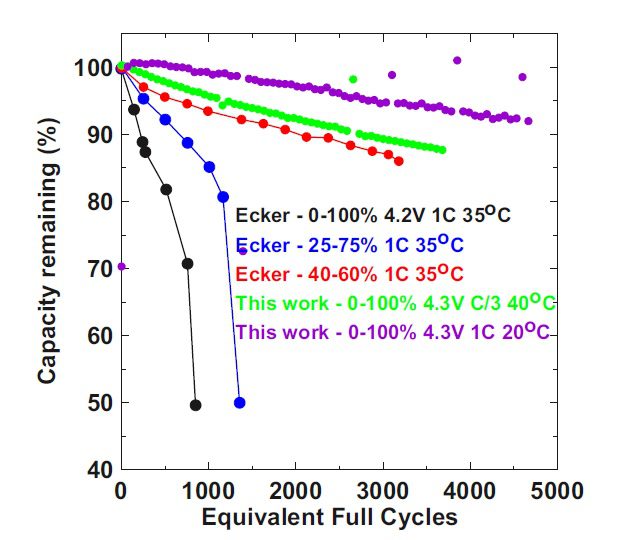
The Tesla lab boasts elements that can withstand millions of kilometers.
The research laboratory hired by Tesla to work on lithium-ion cells boasted about new cell chemistry. Thanks to the NMC cathode (nickel-manganese-cobalt) and the new electrolyte, they are to withstand 1,6 million kilometers of car mileage.
Currently, most of the automotive world uses different types of NMC cells, while Tesla uses a slightly different mix of elements: NCA (nickel-cobalt-aluminum). Modern Tesla batteries are to withstand 480 to 800 thousand kilometers of mileage. However, Elon Musk aims to ensure that their degradation is twice as slow, so that they can withstand as much as gears and bodies - up to 1,6 million kilometers of mileage.
As reported by the portal Electrek (source), Jeff Dahn's laboratory, which investigates the possibilities of improving Li-ion cells for Tesla, presented the results of its work. The new cells use a "single crystal" cathode NMC 532 and an advanced electrolyte. After testing, which in some cases lasted up to three years, scientists risked the claim that the cells would be able to withstand up to 1,6 million kilometers in a car or at least twenty years in an energy store.

Even with the charging temperature of the cells warming up to 40 degrees, they retained 70 percent capacity after 3 full charges, which should translate into mileage of about 1,2 million kilometers. While maintaining the temperature of 20 degrees after approximately 3 million kilometers of mileage the capacity of the cells should drop to approx 90 percent of the primary capacity.
> Tesla wants to produce up to 1 GWh of cells per year. Now: 000 GWh, 28 times less
In an identical experiment, commercially available model lithium-ion cells withstand about 1 cycles, which should translate into 000 kilometers of mileage. Although it should be added here that cells used in the automotive industry have different mixtures of electrolytes, the main task of which is to slow down the degradation process:

It is worth reading (source), because the work organizes knowledge about lithium-ion cells and shows the progress that has been made over the last 4-6 years:
Opening photo: A) microscopic photo of the NMC 532 powder B) microscopic photo of the electrode surface after compression, C) one of the tested 402035 cells in sachets next to the Canadian two-dollar coin, DOWN, diagram on the left) degradation of the tested cells against model cells, DOWN, diagram right) cell lifetime depending on the temperature during charging (c) Jessie E. Harlow et al. / Journal of the Electrochemical Society

This may interest you:
